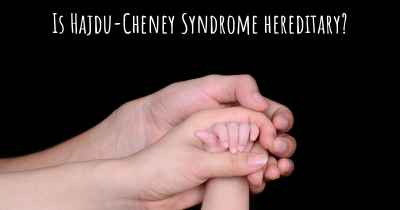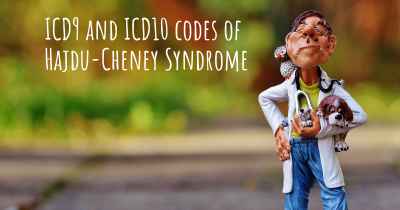What is the history of Hajdu-Cheney Syndrome?
When was Hajdu-Cheney Syndrome discovered? What is the story of this discovery? Was it coincidence or not?

Hajdu-Cheney Syndrome (HCS) is a rare genetic disorder that affects multiple systems in the body. It was first described in medical literature in 1948 by Hungarian physician Bela Hajdu and later in 1969 by American physician Robert L. Cheney. The syndrome is characterized by distinctive facial features, skeletal abnormalities, and various other symptoms.
The discovery and early recognition of Hajdu-Cheney Syndrome:
In 1948, Dr. Bela Hajdu, a Hungarian radiologist, encountered a patient with unique skeletal abnormalities and craniofacial features. He published a case report describing the condition, which later became known as Hajdu-Cheney Syndrome. However, it wasn't until 1969 that Dr. Robert L. Cheney, an American physician, independently described a similar case and further expanded the understanding of the syndrome.
Clinical features and symptoms:
Hajdu-Cheney Syndrome is a complex disorder with a wide range of symptoms. The most notable characteristic is the distinct facial appearance, including a prominent forehead, widely spaced eyes, a small chin, and a beaked nose. Individuals with HCS often have dental abnormalities, such as missing or misshapen teeth, and a high-arched palate.
Skeletal abnormalities are a hallmark of the syndrome. These can include short stature, joint hypermobility, scoliosis (curvature of the spine), osteoporosis (reduced bone density), and abnormalities in the bones of the hands and feet. The bones may be thin and fragile, leading to an increased risk of fractures.
Genetic cause and inheritance:
Hajdu-Cheney Syndrome is caused by mutations in the NOTCH2 gene, which plays a crucial role in embryonic development and bone formation. These mutations result in the production of an abnormal NOTCH2 protein, leading to the characteristic features and symptoms of the syndrome.
The inheritance pattern of HCS is autosomal dominant, meaning that a mutation in one copy of the NOTCH2 gene is sufficient to cause the disorder. In most cases, the mutation arises spontaneously in an affected individual and is not inherited from their parents. However, rare familial cases have been reported, where the mutation is passed down from one generation to the next.
Diagnosis and management:
Diagnosing Hajdu-Cheney Syndrome can be challenging due to its rarity and variable presentation. A thorough clinical evaluation, including physical examination, imaging studies, and genetic testing, is typically required to confirm the diagnosis.
As of now, there is no specific treatment for HCS, and management focuses on addressing the individual symptoms and complications. This may involve a multidisciplinary approach, including orthopedic interventions for skeletal abnormalities, dental care, and monitoring for potential complications such as respiratory problems or cardiovascular issues.
Research and future prospects:
Due to the rarity of Hajdu-Cheney Syndrome, research on the disorder has been limited. However, ongoing studies aim to further understand the underlying genetic mechanisms and potential targeted therapies. The development of animal models and collaborations among researchers worldwide have contributed to advancements in the knowledge of HCS.
Improved understanding of the syndrome's genetic basis may pave the way for future treatments and interventions to alleviate the symptoms and improve the quality of life for individuals with Hajdu-Cheney Syndrome.








